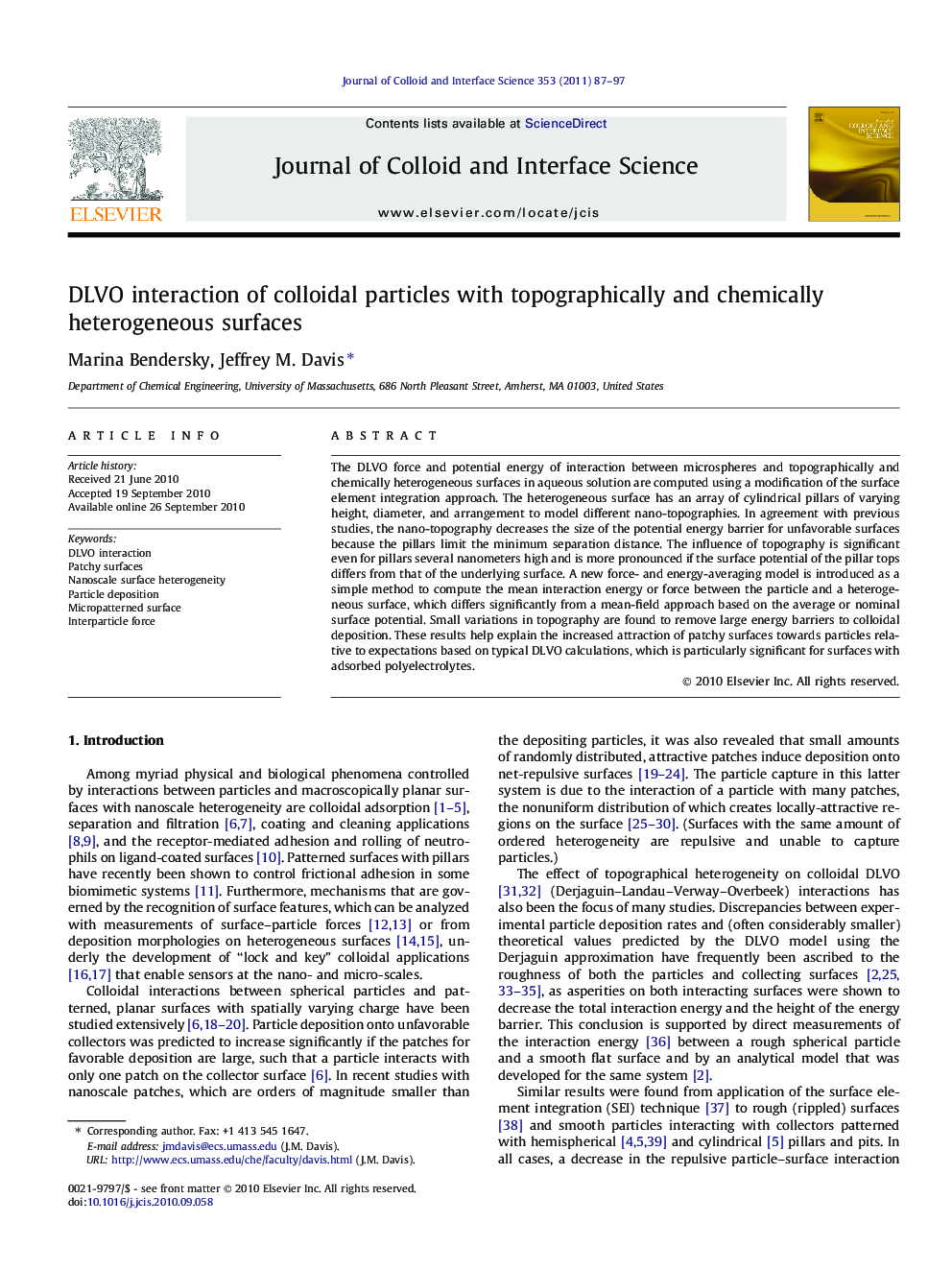| Article ID | Journal | Published Year | Pages | File Type |
|---|---|---|---|---|
| 608975 | Journal of Colloid and Interface Science | 2011 | 11 Pages |
The DLVO force and potential energy of interaction between microspheres and topographically and chemically heterogeneous surfaces in aqueous solution are computed using a modification of the surface element integration approach. The heterogeneous surface has an array of cylindrical pillars of varying height, diameter, and arrangement to model different nano-topographies. In agreement with previous studies, the nano-topography decreases the size of the potential energy barrier for unfavorable surfaces because the pillars limit the minimum separation distance. The influence of topography is significant even for pillars several nanometers high and is more pronounced if the surface potential of the pillar tops differs from that of the underlying surface. A new force- and energy-averaging model is introduced as a simple method to compute the mean interaction energy or force between the particle and a heterogeneous surface, which differs significantly from a mean-field approach based on the average or nominal surface potential. Small variations in topography are found to remove large energy barriers to colloidal deposition. These results help explain the increased attraction of patchy surfaces towards particles relative to expectations based on typical DLVO calculations, which is particularly significant for surfaces with adsorbed polyelectrolytes.
Graphical abstractDLVO interactions are computed between a colloidal particle and heterogeneous collector, and a simple statistical approach is proposed for calculating the mean potential energy of interaction for randomly distributed heterogeneity.Figure optionsDownload full-size imageDownload high-quality image (64 K)Download as PowerPoint slideResearch Highlights►Method to compute DVLO interactions with topographical and chemical heterogeneity. ►Topographical features increase attraction between heterogeneous surfaces. ►Explains deviations from mean-field predictions for surfaces with adsorbed patches. ►Simple statistical approach requires only two calculations with homogeneous surfaces.
